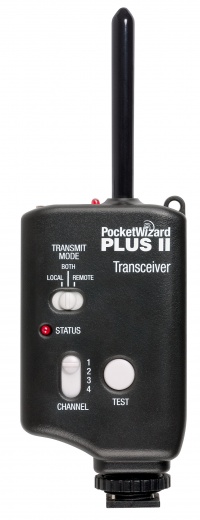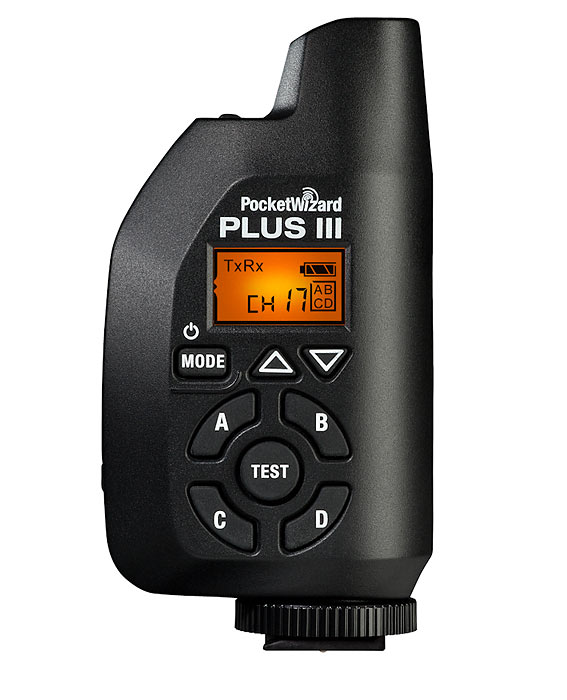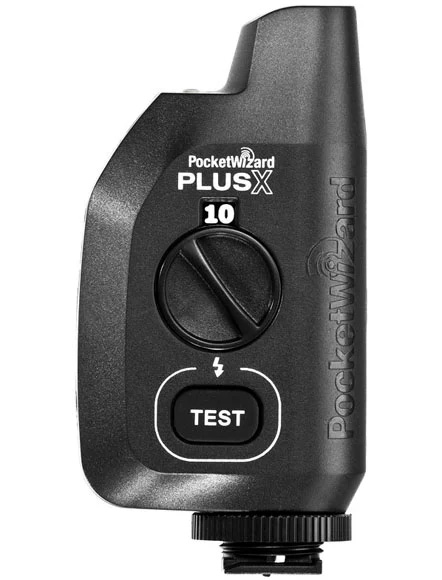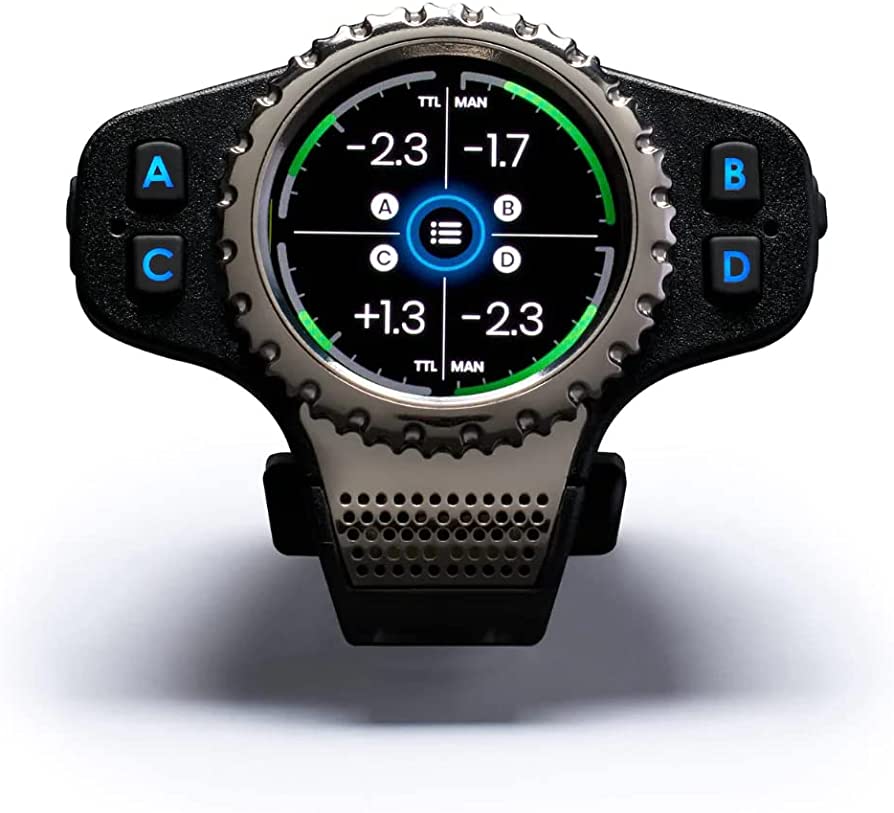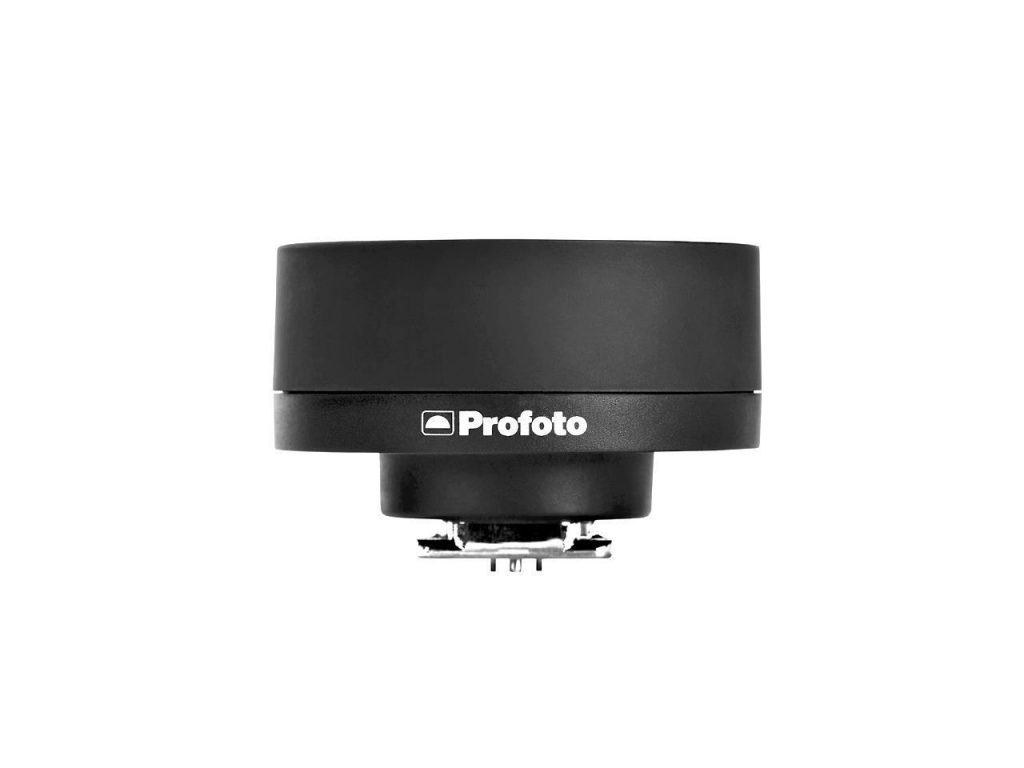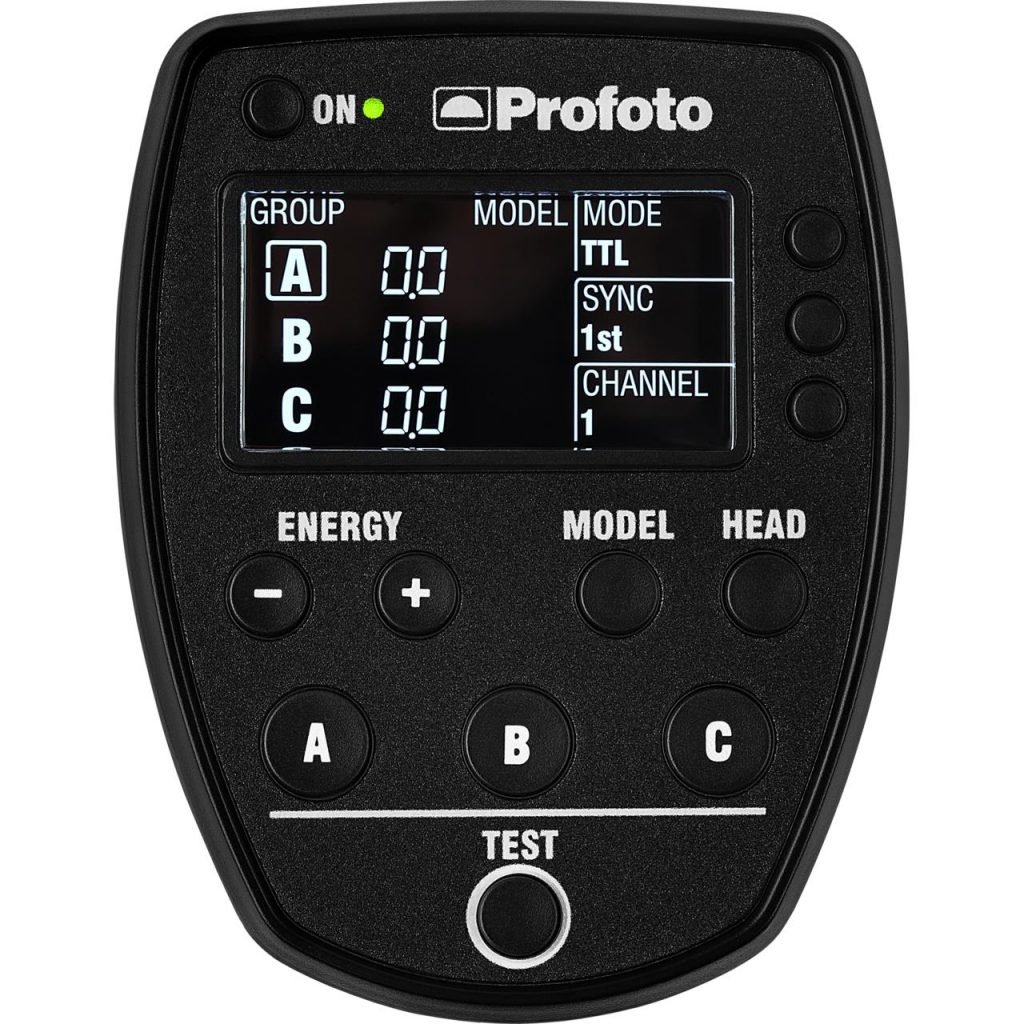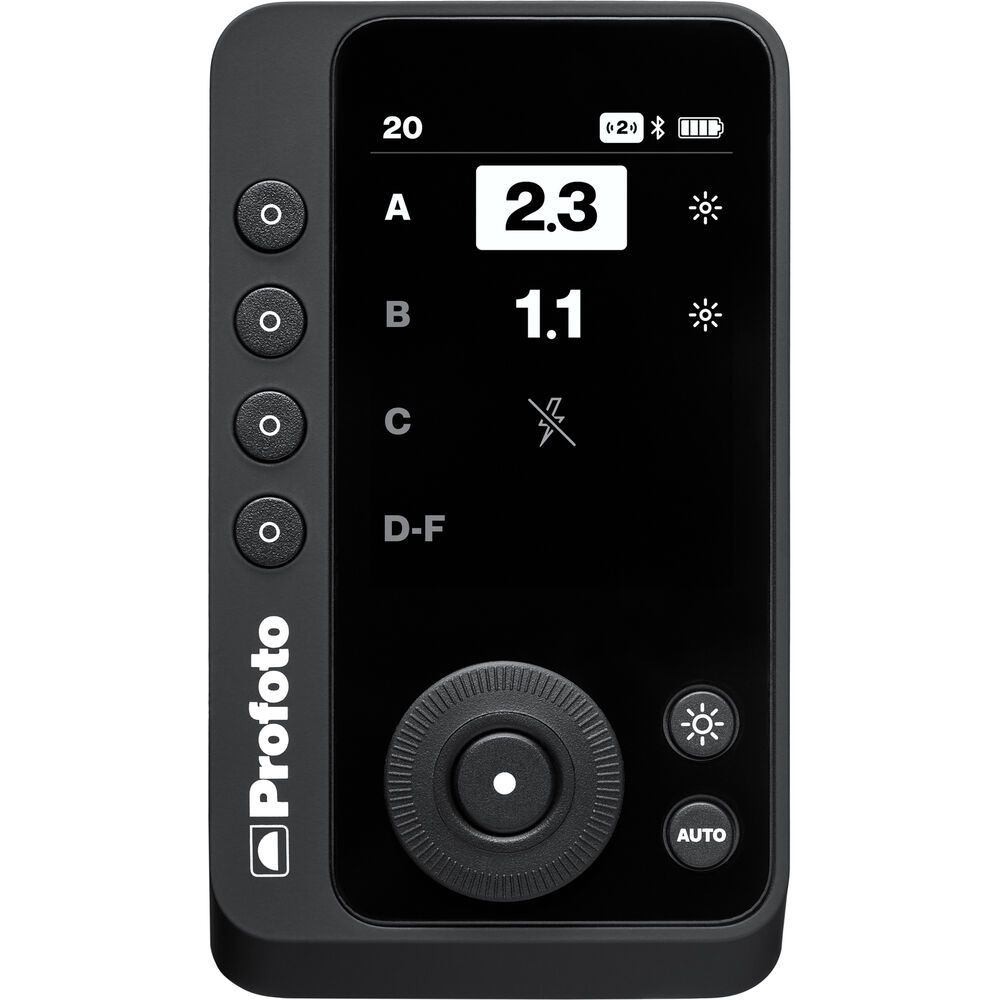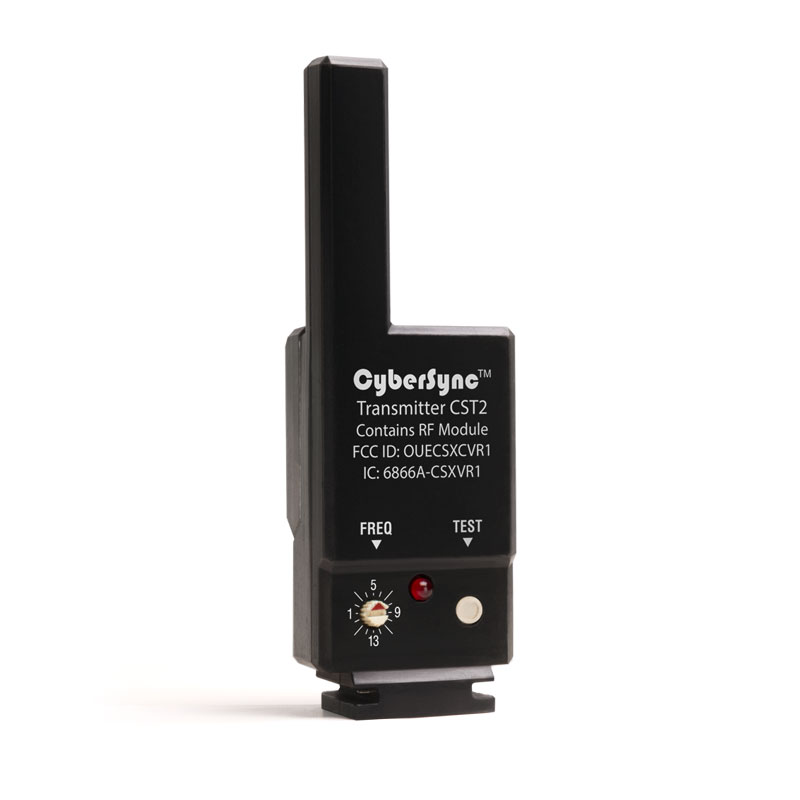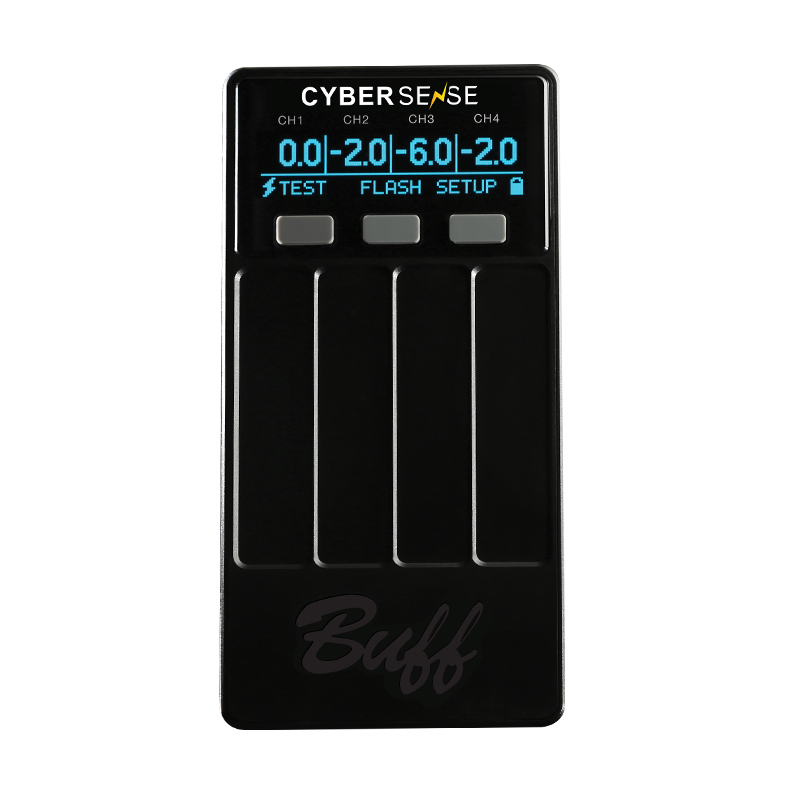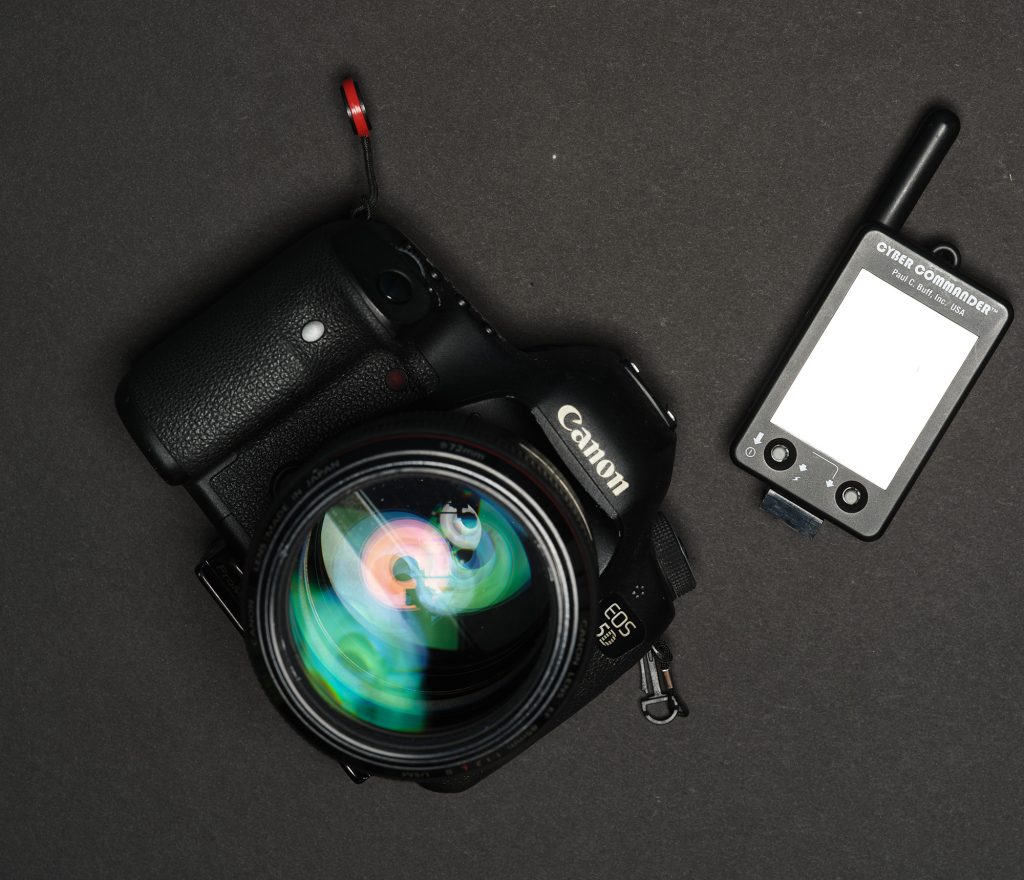Equipment
Finding the Best Wireless Flash Triggers
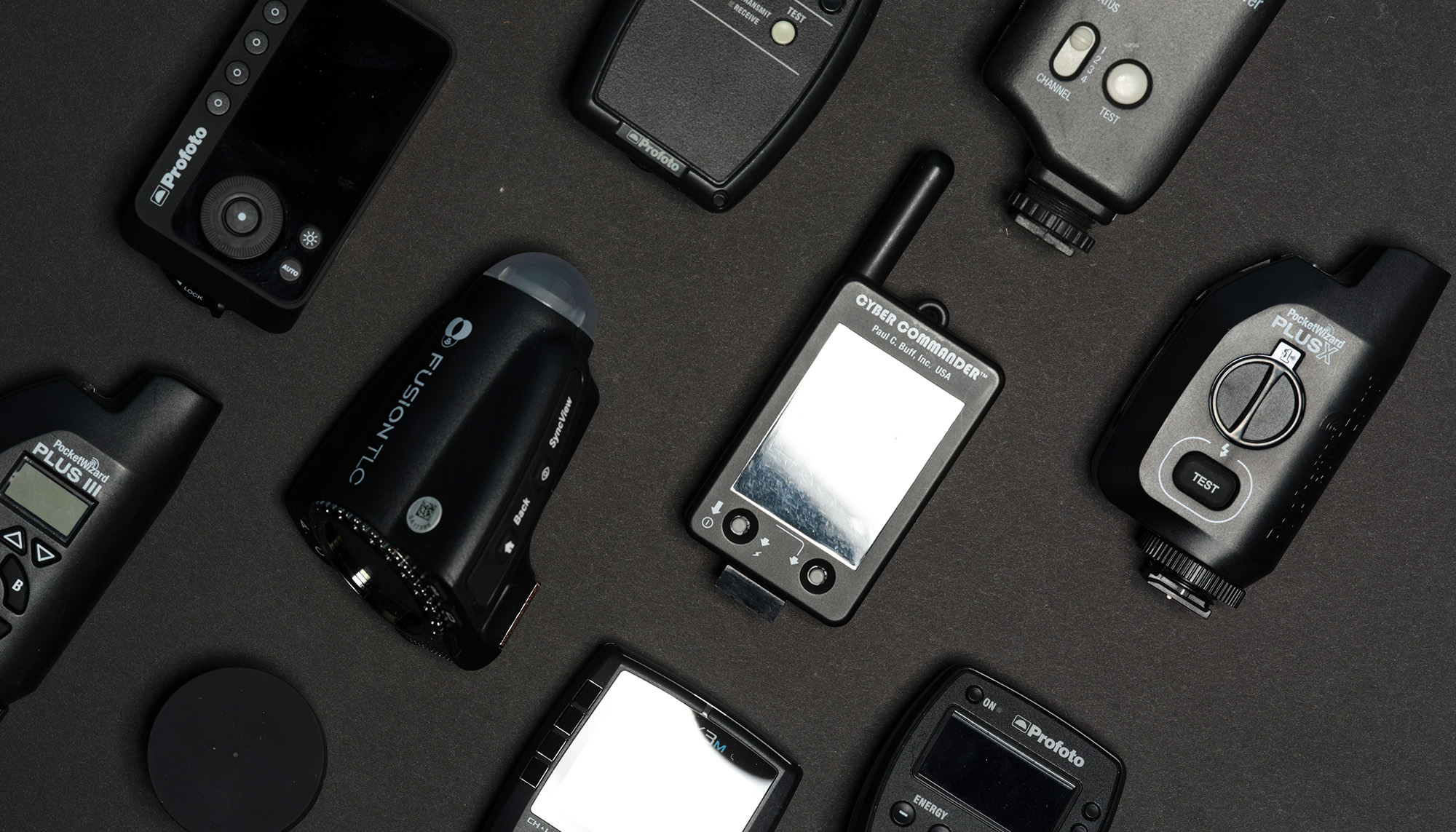
There is no shortage of wireless trigger options for photography these days. Where once there were just a couple of brands, an industry has exploded into an overwhelming market of various triggers with several ‘special’ features depending on the brand. So how do you navigate through the noise to find the best and most practical wireless trigger for you? Well, I went and placed a chaotic rental order to help figure just that out.
What Are Wireless Triggers?

If you are using off-camera lighting, you’ll likely want to utilize a wireless trigger to help make the process much easier. Wireless triggers will often sit on your camera’s hotshoe, and the moment you press the shutter button, it sends a wireless signal to another unit attached to the strobe light, firing the strobe light just as the shutter clicks open. The process itself is done in thousandths of a second and allows you to light subjects and scenes with a quick blip of light. To utilize a wireless trigger, you’ll need two units – one on the camera (often called a transmitter), and one on the light (typically called a receiver). Some brands have units that operate both as a transmitter and a receiver, and some brands have specialized receivers built into their lights, and all of them give you different frequencies and channels to fire your lights. I’ve put together a small glossary to look over before we dive into the strobe options I’ve tested for this piece.
Frequencies vs. Channels
One thing you’ll notice on almost all of the triggers available, is they offer changes to both frequencies and channels. Frequencies are the radio waveband that the trigger is operating on. So for example, if you have 4 different lights you want to fire, you’ll want to have them all on the same frequency as the remote – Frequency #1 for this example.
Channels (or sometimes called groups) are available on some trigger units that allow you to group out your lights. For example, if you have two background lights firing on a roll of seamless, with the intent of getting a solid color, you might want to group these two lights into a single channel – channel or group 3. The main light on your subject might be on group or channel 1, and your rim light might be on channel or group 2. Depending on the trigger, you may have the ability to adjust the power output of each channel individually, so this setup would allow you to adjust each set of lights individually, without having any effect on the other lights. That said, each light will need to be on the same frequency to fire when you press the shutter button.
Additional Features
Depending on the flash units’ capabilities, and the capabilities of the trigger system, there are several additional features available on some of the units. Each of those features is broken down below.
Front & Rear Curtain Sync
Front and Rear Curtain sync refers to when you want the flash to fire when dragging your shutter to slower speeds (1/5 a sec for example). If you think about how your camera’s shutter system operates, this feature is pretty easy to understand. Do you want the flash to fire at the beginning of the image capture process, or the end? There are advantages to each, and this may be a topic I discuss in an upcoming article if there is enough interest.
TTL Functionality
TTL stands for ‘Through the Lens’ and is a feature that gives your flash unit a form of auto functionality. By using the metering system already built into your camera, the trigger will meter the scene, and determine what power setting the flash should be set to. Results will often vary, but TTL can usually get you a rough idea of what power setting you’ll want your flash set to depending on the scene.
High-Speed Sync
High-Speed Sync will give your flash the ability to work beyond the flash sync speed of your camera (usually limited to 1/160-1/250 a sec) by working one of two ways. The most common way is by firing a small burst of flashes so that the scene is lit through both the opening and shutting of the shutter, giving you even light. The second and less common way is by extending the flash duration to 1/200th a second so that the scene is lit during the entire shutter process. High-speed sync is a really powerful feature when used correctly, and something I’ve covered before on this blogif you’d like to know more.
Multi-Camera Support
Not all camera systems do TTL and High-Speed Sync the same, so recently, transmitters have been camera brand specific, meaning you need to buy the correct transmitter for your specific camera brand. However, some of these triggers offer universal support, meaning one trigger will work on all brands of cameras. This usually means TTL and High-Speed Sync are not available on these units, but I wanted to make mention of this in case you use multiple different camera systems.
Multi-Unit Support
One or two units on this list boast multi-unit support, which simply means it can work as the transmitter for several different trigger systems (Profoto, Pocket Wizards, Cybersyncs, etc, etc). We’ll discuss that feature more in the Raven TLC’s breakdown below.
There are several other features that are individual to each brand and trigger, but these are the key features that I feel all modern triggers should have. Any specialized features will be discussed in the breakdown of the tested wireless triggers below. So let’s get into the tested lineup.
The Units Tested
Editor Note – The selection of triggers tested is a result of what Lensrentals.com carries on their website, as well as what I was able to source from my own personal collection and through friends. That is not to say that these are all the triggers available, just what we carry and commonly rent. Additionally, Canon/Nikon/Sony branded triggers were not included in this test, as many of those triggers are designed for speedlights and are optical triggers, not radio-transmitting triggers.
PocketWizard
PocketWizard has been by and large the industry standard for wireless triggers for over twenty years now. And because of that, they have a large variety of different wireless triggers available for strobe and studio photography. For this test, we took the 4 most popular triggers developed by PocketWizard.
PocketWizard Plus II
Added to the list only because I was able to find them in my studio when I was doing spring cleaning a few weeks ago, the PocketWizard II is no longer in production but was one of the few only options for wirelessly firing strobes 15-20 years ago. Very simple (and bulky) in design, the PocketWizard Plus II can be found on the used market for $20-35 dollars, offers up a range of 1600ft, and are transmitters and receivers built into each individual unit (a feature not easy to find nowadays). Limited to only 4 channels, these are still great triggers who are looking for something that is cheap, effective, and universal across all camera brands. Sadly though, there are no other features like TTL, High-Speed Sync, or Rear Curtain Sync.
PocketWizard PlusX
As the budget-friendly trigger option available for PocketWizard, the PocketWizard PlusX is a modern take on the simplicity of the PocketWizard II listed above. Available for $99 new, the PocketWizard X offers 10 different channels of use and works as both a transmitter as well as a receiver through the use of its 1/8″ headphone cable input. Additionally, by using their Auto Relay system, you can use the PocketWizard PlusX (and all PocketWizards in fact) as a remote trigger for your camera, though you would need at least 3 units to do this (one for you to trigger the camera, one on the camera, and one on the strobe) and a specialized cable.
PocketWizard Plus III
The most common of the PocketWizard brand, the PocketWizard Plus III offers all the features of the previously listed models, as well as some additions to the system. With 16 channels and 4 groups per channel, the PocketWizard Plus III gives you plenty of options in the radio frequency department. Additionally, the ability to use them as both a transmitter and receiver is immensely useful, but they offer high-range modes to help round out the features – promising a range of 1,600ft.
Raven Fusion TLC
The Fusion TLC is the cream of the crop when it comes to PocketWizard’s branding, as well as triggers in general. The Raven Fusion TLC is designed to be the ultimate trigger platform, offering support for Pocketwizard’s platform, as well as Profoto’s Air system, Paul C Buff’s, and Godox. Were the previous PocketWizard systems are designed to be really easy, the Raven Fusion opts for a more advanced approach. Using a small circular touchscreen, you’re able to adjust light outputs on the unit (if your studio flash supports such features), enable High-Speed Sync, TTL, and even see your flash duration with its SyncView system. While complicated to use, the Raven gives you expert-level features that allow you to really explore what can be done with studio lighting. Need examples? Look no further than some of the work Jeremy Cowart has produced with the Raven Fusion TLC.
Profoto Air
Profoto introduced its Air platform for triggers a couple of decades ago at this point and has done a lot to advance its platform and the standards of wireless triggers over the last decade. So let’s look at the tested triggers from their Air platform. The biggest benefit of the Profoto Air platform is that all of their modern strobes have built-in wireless Air receivers built in the unit, so there is no need for additional pieces beyond what you have on your camera hotshoe. The downside, of course, is that many of their strobes don’t have 1/8″ headphone jacks any longer, so you’re locked into their Air Remote platform.
Profoto Connect
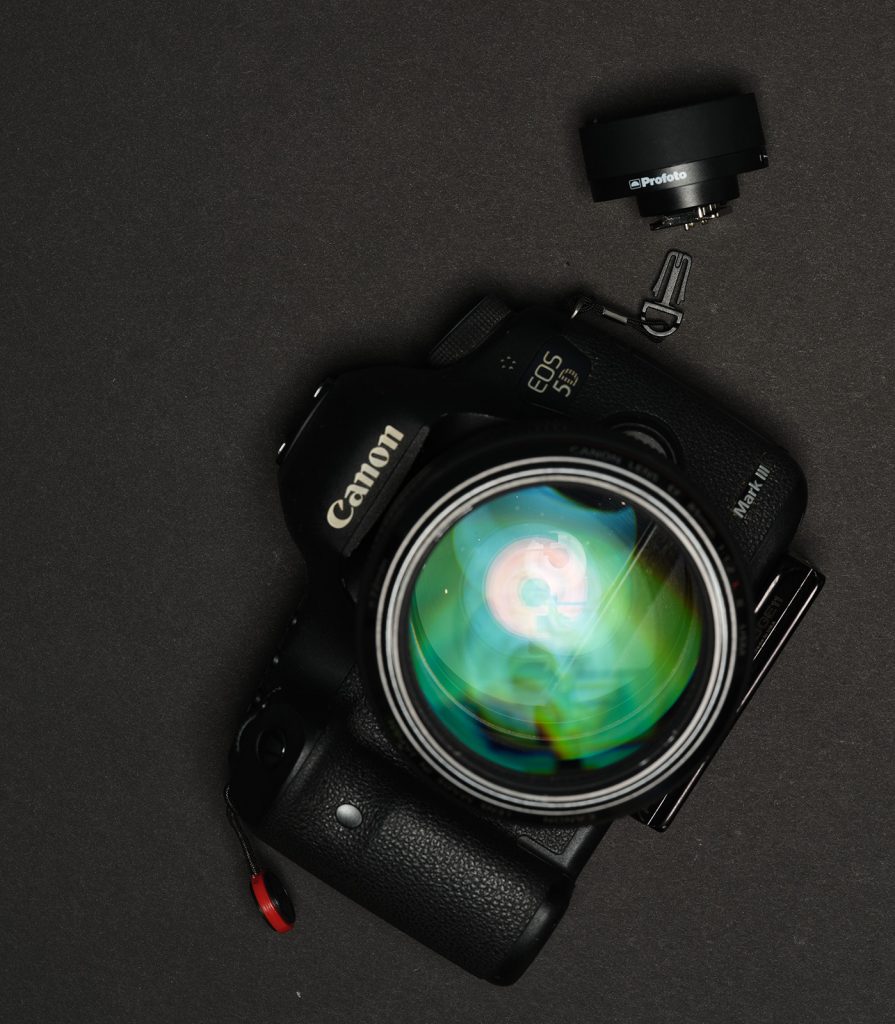
Designed as their most basic trigger system, the Connect looks like a miniature hockey puck that sits on your hotshoe. With no buttons, the Connect has a small dial that allows you to power on the unit, and switch from TTL and Manual mode. The rest of the settings and adjustments can be done on the Profoto Remote App for your phone or tablet devices. This app, paired with the Connect, allows you to enable High-Speed Sync, Rear Curtain Sync, and adjust the power of your strobe units (depending on the model). While the Connect is the most affordable option from Profoto and is heavy on features, the need for the iOS/Android app makes the unit a bit more cumbersome than led on.
Profoto Air Remote (Non-TTL)
The oldest of the Profoto units available, the Profoto Air Remote (Non-TTL) is limited in features but shares some of the beloved features found on the PocketWizard platform. For one, the trigger can be used both as a transmitter and a receiver of all Air Remotes. Through the use of the 1/8″ headphone jacks built into the system, you’re given added functionality, especially when using older Profoto strobe units like the Pro 7a. Sadly, due to its age, the Profoto Air Remote (Non-TTL) doesn’t offer TTL, High-Speed Sync or many other features the modern photographer might need outside a controlled environment like a studio. But the unit itself is universal across all camera brands, a feature not seen in the rest of the Profoto lineup.
Profoto TTL Air Remote
As the likely most common Profoto wireless trigger, the Profoto TTL Air Remote is a highly functional wireless transmitter from Profoto. Most notably, this flash trigger offers all of the latest features a modern photographer might need – power adjustment for (Profoto) strobes, TTL functionality, High-Speed Sync, and several channels and groups with full adjustability. As mentioned above, if you’re using this with modern Profoto strobes, you’ll be able to control most of the functions of that strobe with this remote. The battery life, however, is not great. Additionally, like the Connect mentioned above, and the Connect Pro mentioned below, this trigger is exclusive to your camera system – offering options for Canon, Nikon, Sony, Fuji, and more.
Profoto Connect Pro
Finally to round out the Profoto triggers is their flagship wireless transmitter, the Profoto Connect Pro. The Connect Pro offers all of the features of the Profoto TTL remotes, with full adjustability of lights (two-way communication for lights with BT support), along with High-Speed Sync, TTL, and Rear Shutter capabilities. With 100 different channels and six groups per channel, the Profoto Connect Pro has more than any photographer could possibly need in a flash trigger unit.
Paul C Buff
Paul C Buff is the brand behind the forever popular Alien Bees strobes, offering a budget-friendly strobe solution aimed at beginner and experienced photographers alike. Much like the affordability of their strobes, Paul C Buff also offers a number of wireless transmitters and receivers for strobe photography, all at an affordable price. So let’s look at the options we have available for Paul C Buff.
CyberSync II Transmitter
The most basic of triggers is the CyberSync Transmitter. Minimalist in design, the CyberSync Transmitter offers a small dial to adjust to one of 15 channels, and a test button. However, its small design (using only a watch battery) makes it an interesting and compact trigger option for photographers everywhere. That said, the CyberSync transmitter is minimal in features as well, offering no TTL or High-Speed Sync support, but is universal across all camera brands.
PCB Cyber Commander
Ramping up the complications comes the PCB Cyber Commander. With a full-color screen, the Cyber Commander gives you several graphs allowing you to control 16 different lights on 16 different frequencies. The Cyber Commander allows you to adjust the light output on most modern Paul C Buff strobes in 1/10 stop increments, and has a built-in flash meter to measure light output. However, of all the triggers on this list, none are nearly as complicated to use as the Cyber Commander, making it a choice for only the most experienced of users.
PCB CyberSense Trigger
One “trigger” I ordered but was unable to use in this test was the discontinued Paul C Buff CyberSense. I rented this thinking it would work well as a wireless transmitter, but it actually acts as a wireless controller for lights using the CyberSync systems. With touch-sensitive controls, the CyberSense Trigger looks to simplify the complicated Cyber Commander, but alas, is not a wireless trigger, so won’t be included in the testing going forward.
Westcott
Westcott has been a staple in the lighting world for a long time now, but in recent years, has developed their own strobe lineup, along with their own wireless transmitter system. So let’s look into the FJ-X3.
Westcott FJ-X3
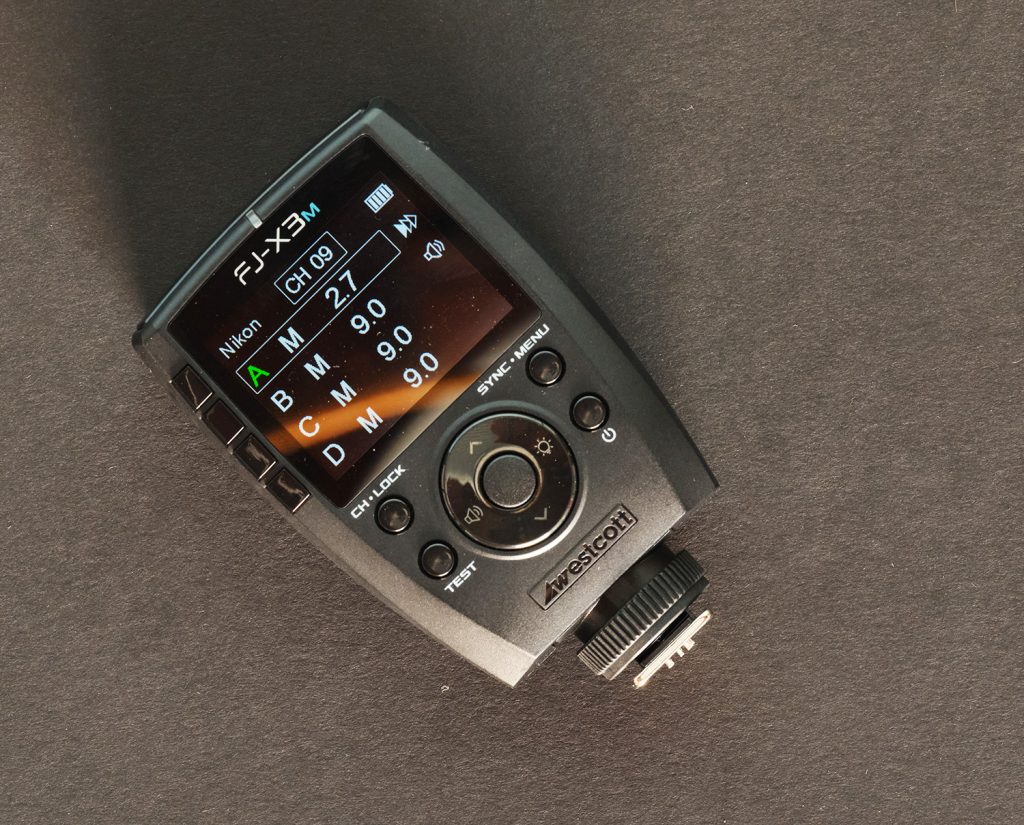
The Westcott FJ-X3 is Westcott’s attempt at making a do-all wireless transmitter for their strobes while being universal in design so that all camera brands can use a single transmitter (Sony does need an adapter though). The FJ-X3 offers High-Speed Sync, TTL, and Rear Curtain syncing, and also includes a mobile app that promises to unlock even more features. Additionally, while designed for the FJ Wireless strobes, the FJ-X3 also has built-in functionality for Canon RT flash units.
Test #1 – Testing the Reliability of Wireless Triggers
For the first major test on these triggers, I chose to test the reliability of these triggers. This test itself was simple – with each trigger, I tested the reliability of firing a flash for 200 flashes and marked any moments when the flash did not fire. Each of the triggers was equipped with brand new batteries (or 100% charged if using built-in batteries) for this test, and the light it was firing was about 10 feet from the trigger. Below are the results of this test.
| Trigger (Transmitter) | Receiver | Frequency | Reliability |
|---|---|---|---|
| PocketWizard Plus II | PocketWizard Plus II | Channel 1 (340 Hz) | 195/200 |
| PocketWizard PlusX | PocketWizard PlusX | Channel 1 (340 Hz) | 197/200 |
| PocketWizard Plus III | PocketWizard Plus III | Channel 1 (340 Hz) | 198/200 |
| Raven Fusion TLC | Profoto B10+ (In Unit Receiver) | Channel 1 (2.4 GHz) | 199/200 |
| Profoto Connect | Profoto B10+ (In Unit Receiver) | Channel 1 (2.4 GHz) | 199/200 |
| Profoto Air Remote | Profoto B10+ (In Unit Receiver) | Channel 1 (2.4 GHz) | 198/200 |
| Profoto TTL-F Air Remote | Profoto B10+ (In Unit Receiver) | Channel 1 (2.4 GHz) | 200/200 |
| Profoto Connect Pro | Profoto B10+ (In Unit Receiver) | Channel 1 (2.4 GHz) | 200/200 |
| CyberSync Transmitter | CyberSync Receiver (In DigiBee DB400) | Channel 1 (2.4 GHz) | 200/200 |
| PCB Cyber Commander | CyberSync Receiver (In DigiBee DB400) | Channel 1 (2.4 GHz) | 192/200 |
| Westcott FJ-X3 | Westcott FJ400 (In Unit Receiver) | Channel 1 (2.4 GHz) | 200/200 |
What surprised me the most about this test was just how accurate the firing of the strobes was. As someone who has used studio strobes for nearly 20 years now, I recall having far more misfires earlier in my career, when wireless triggers were less readily available. I was impressed by all the units tested and expected to have less reliability throughout this test.
Test #2 – Testing the Distance Limits of Each
If you’ve read up on triggers in the past, you’ve probably seen that they all have listed some pretty outrageous ranges of operation. The range is simply the distance you can have from your transmitter to your receiver for the flash to still operate. Depending on the frequency band the wireless trigger is using, it’s not uncommon to see ranges listed of 500 to even 1000ft range on these triggers. While I can’t imagine a practical purpose of having your flash 1000′ from your transmitter, I was still very skeptical of these numbers. Given that many of these wireless triggers operate on a 2.4 GHz bandwidth – a common frequency for wireless phones, routers, and other devices – I knew that 1000ft was stretching the reality of the topic. While I’m not suggesting these manufacturers are outright lying, I do think that these numbers were determined in the most optimal of conditions – done in a perfectly flat and unobstructed area, with little to no radio interference. So I decided it was worth testing each wireless trigger in suboptimal conditions.
My test was done at my home, in the middle of Los Angeles, with obstructions plenty, because that’s how real life usually is. Set up in my studio were several different wireless triggers, connected to several different strobes. I set each trigger to its own individual channel (and I know that the channel in itself is its own variable, though likely nominal), and then walked 5ft, tested each of the wireless transmitters, marked the results, walked another 5ft, and tested again. Once a light failed a single time, I marked its range and continued with the remaining triggers. While many transmitters offer a long-range mode for their flashes, I opted not to use these tests, as often all it’s doing is sending multiple signals to get the flash to fire one time, and a single failure was marked as a failure for ease of testing. The results of this test are below.
| Trigger (Transmitter) | Receiver | Frequency | Distance Failure |
|---|---|---|---|
| PocketWizard Plus II | PocketWizard Plus III (On Profoto Pro 7a) | Channel 1 (340 Hz) | 130ft |
| PocketWizard PlusX | PocketWizard Plus III (On Profoto Pro 7a) | Channel 1 (340 Hz) | 135ft |
| PocketWizard Plus III | PocketWizard Plus III (On Profoto Pro 7a) | Channel 1 (340 Hz) | 120ft |
| Raven Fusion TLC | Profoto B10+ (In Unit Receiver) | Channel 1 | 135ft |
| Profoto Connect | Profoto B10+ (In Unit Receiver) | Channel 1 | 135ft |
| Profoto Air Remote | Profoto B10+ (In Unit Receiver) | Channel 1 | 135ft |
| Profoto TTL-F Air Remote | Profoto B10+ (In Unit Receiver) | Channel 1 | 135ft |
| Profoto Connect Pro | Profoto B10+ (In Unit Receiver) | Channel 1 | 135ft |
| CyberSync Transmitter | CyberSync Receiver (In DigiBee DB400) | Channel 1 | 135ft |
| PCB Cyber Commander | CyberSync Receiver (In DigiBee DB400) | Channel 1 | 125ft |
| Westcott FJ-X3 | Westcott FJ400 (In Unit Receiver) | Channel 1 | 135ft |
The Final Results
After spending several hours with each of these flash triggers, I decided it was best to also mark my thoughts on each of them in an easy-to-read graph. Below is the breakdown of how each wireless trigger scored, for more information on why they got that specific score, please read up on the description of each wireless transmitter above.
| Trigger | Transmitter / Receiver Combo? | Universal? (Camera) | Universal? (Strobe) | Features | Features Score X/10 | Ease of Use (10/10 Being Easiest) | Claimed Range | Actual Range | Price | Overall Score |
|---|---|---|---|---|---|---|---|---|---|---|
| Pocket Wizard Plus II | Transmitter / Receiver | Universal | Universal | 4 Channels | 2/10 | 9/10 | 1,600 ft | 130 ft | ~$30 Used | 4/10 |
| Pocket Wizard PlusX | Transmitter / Receiver | Universal | Universal | 10 Channels, RTC | 3/10 | 9/10 | 1,600 ft | 135 ft | $95 | 5/10 |
| Pocket Wizard Plus III | Transmitter / Receiver | Universal | Universal | 32 Channels, 4 Groups. RTC, LRM | 4/10 | 9/10 | 1,600 ft | 120 ft | $139 | 6/10 |
| Raven Fusion TLC | Transmitter Only | Brand Specific | Universal | 80 Channels, 4 Groups, TTL, HSS, MLS, LCC, CSC, LM, LRM | 10/10 | 5/10 | 1,500 ft | 135 ft | $429 | 9/10 |
| Profoto Connect | Transmitter Only | Brand Specific | Brand Specific | 20 Channels, Multiple Groups, TTL, HSS, LCC, CSC, MAS | 7/10 | 6/10 | 300 ft | 135 ft | $199 | 7/10 |
| Profoto Air Remote | Transmitter / Receiver | Brand Specific | Brand Specific | 8 Channels, 6 Groups, LCC | 6/10 | 7/10 | 300 ft | 135 ft | $399 | 5/10 |
| Profoto TTL Air Remote | Transmitter Only | Brand Specific | Brand Specific | 8 Channels, 6 Groups, TTL, HSS, LCC, CSC | 7/10 | 7/10 | 300 ft | 135 ft | $249 | 8/10 |
| Profoto Connect Pro | Transmitter Only | Brand Specific | Brand Specific | 100 Channels, 6 Groups, LCC, TTL, HSS, MAS, CSC | 9/10 | 8/10 | 300 ft | 135 ft | $399 | 9/10 |
| CyberSync Transmitter | Transmitter Only | Universal | Universal | 15 Channels | 2/10 | 9/10 | 350 ft | 135 ft | $60 | 6/10 |
| PCB Cyber Commander | Transmitter Only | Universal | Brand Specific | 16 Channels, LCC, Light Meter | 4/10 | 1/10 | 350 ft | 125 ft | $179 | 2/10 |
| Westcott FJ-X3 | Transmitter Only | Universal | Brand Specific | 32 Channels, TTL, HSS, MAS, CSC, LRM | 8/10 | 7/10 | 985 ft | 135 ft | $100 | 8/10 |
RTC – Remote Trigger Capabilities | TTL – Through the Lens Metering | HSS – High-Speed Sync | MLS – Multi-Light Support
LCC – Light Control Capabilities | CSC – Curtain Sync Capabilities | MAS – Mobile App Support | LRM – Long Range Mode
So what’s the verdict? Well, there isn’t a clear winner here. When it comes to features, it’s hard to deny the exceptionalism of the Raven Fusion TLC, Profoto Connect Pro, and the Westcott FJ-X3. However, two of those flashes are exclusive to their brands, and the Raven Fusion TLC is the most expensive trigger on the list. All of the triggers performed exceptionally on the reliability testing, and all faired well on the distance testing, though none of them met their claimed maximum distance.
So the end advice is pretty simple – If you use Profoto lights, the Connect Pro is an exceptional wireless trigger that gives you full control of your strobes. If you’re using the Westcott strobes, the FJ-X3 is a steal at only $100. If you’re using a different brand of strobe, the PCB CyberSync Trigger or a PocketWizard II/X are obvious choices that limit features but are really cheap and reliable. And if you’re looking to do expert-level lighting techniques, nothing can do quite what the Fusion TLC does.
Related Reading
- Effective Headshot Photography Techniques on Location
- Photography Fundamentals – How Shutter Speed Changes Your Photos
- Why You Need to Consider Parabolic Reflectors in Your Work
- Understanding Light Control – Photographing Black on Black and White on White
Author: Zach Sutton
I’m Zach and I’m the editor and a frequent writer here at Lensrentals.com. I’m also a commercial beauty photographer in Los Angeles, CA, and offer educational workshops on photography and lighting all over North America.-
BrooklynPhotoGuy
-
Franz Graphstill
